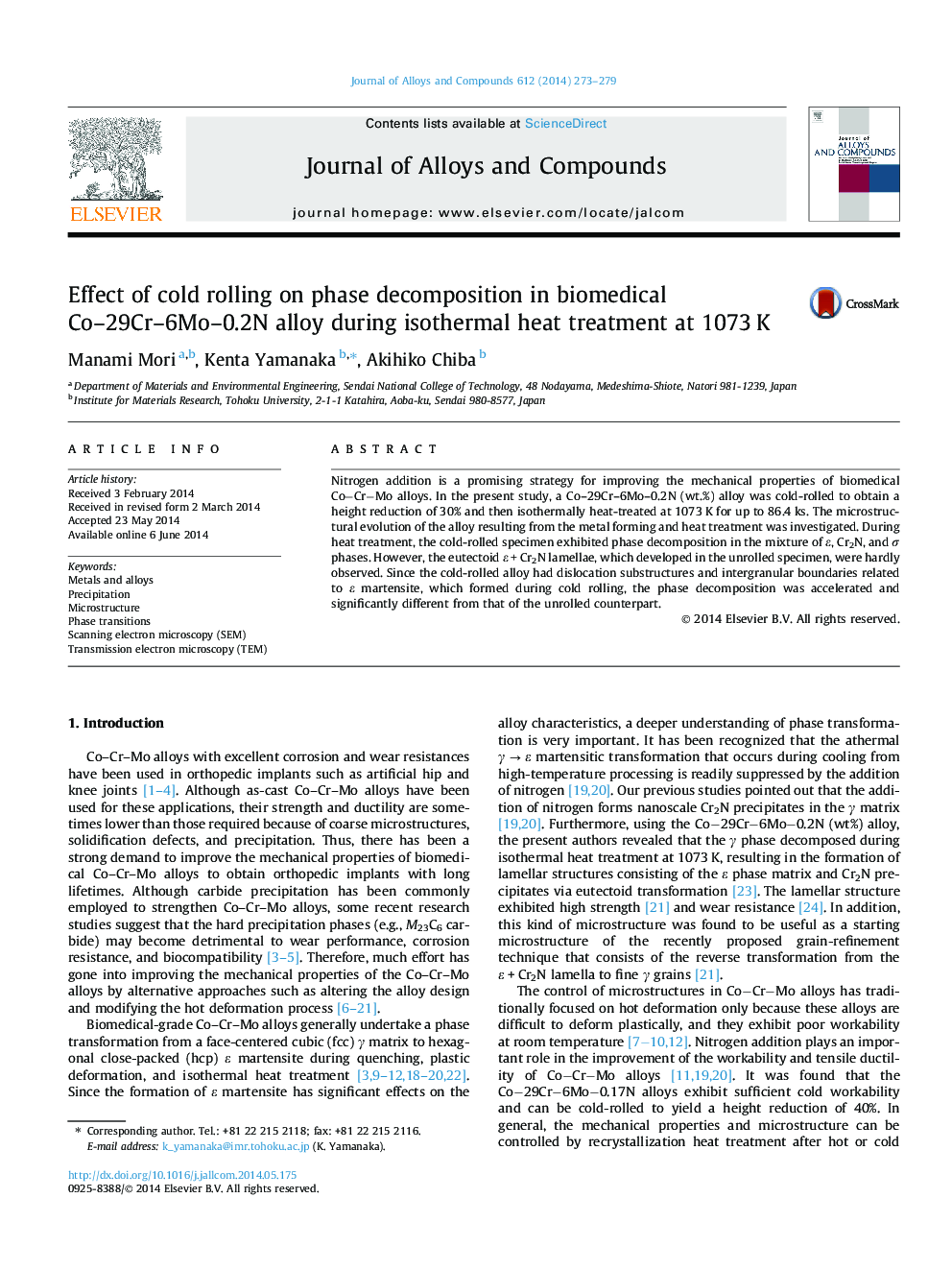| Article ID | Journal | Published Year | Pages | File Type |
|---|---|---|---|---|
| 1610751 | Journal of Alloys and Compounds | 2014 | 7 Pages |
•Biomedical Co–29Cr–6Mo–0.2N alloy was cold rolled to 30% height reduction.•Cold-rolled alloy was heat-treated at 1073 K for up to 86.4 ks.•Phase decomposition occurred in the mixture of ε, Cr2N, and σ phases.•Eutectoid ε + Cr2N lamellae were absent in cold-rolled, heat-treated specimen.•Cold rolling affected nucleation of γ grains during reverse transformation.
Nitrogen addition is a promising strategy for improving the mechanical properties of biomedical Co−Cr−Mo alloys. In the present study, a Co–29Cr–6Mo–0.2N (wt.%) alloy was cold-rolled to obtain a height reduction of 30% and then isothermally heat-treated at 1073 K for up to 86.4 ks. The microstructural evolution of the alloy resulting from the metal forming and heat treatment was investigated. During heat treatment, the cold-rolled specimen exhibited phase decomposition in the mixture of ε, Cr2N, and σ phases. However, the eutectoid ε + Cr2N lamellae, which developed in the unrolled specimen, were hardly observed. Since the cold-rolled alloy had dislocation substructures and intergranular boundaries related to ε martensite, which formed during cold rolling, the phase decomposition was accelerated and significantly different from that of the unrolled counterpart.
